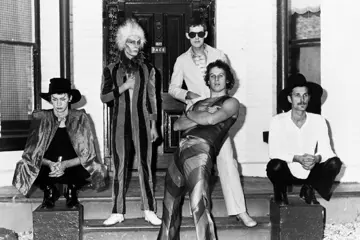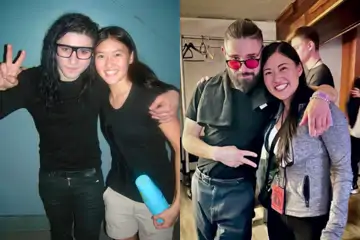|
Kelly Reichardt calls out the idea that a director should be expected to snappily summarise their film. Anthony Carew gets the lowdown on Night Moves. |
Through her first four features – 1994’s River Of Grass, 2006’s Old Joy, 2008’s Wendy And Lucy, 2010’s Meek’s Cutoff – Kelly Reichardt earned a reputation as one of American cinema’s dreamiest minimalists. But with Night Moves, Reichardt has moved closer to genre.
It’s a thriller, of sorts. “The genre demands a certain amount of plot,” Reichardt says. “When I was cutting the other films, there were different ways they could’ve gone, but this film had a straighter trajectory, a clearer path that the editing needed to follow. Any time I tried to veer off the path, and have any meandering, the tension would just collapse. It’s fun to build tension, and it was interesting to see how much the hard lines of the genre demand that you stay the course.”
Co-written with long-time collaborator Jonathan Raymond, Night Moves again plays out in the Oregon landscape: Jesse Eisenberg, Dakota Fanning and Peter Sarsgaard a trio of eco-terrorists who plan to blow up a dam, then grapple with guilt and paranoia. “At the beginning, the characters have this concrete set of beliefs that they’re pretty sure of, there’s a task list for them to accomplish. But once they have accomplished them, and they go their own ways, and they’re no longer within that group dynamic, they’re left with their own thoughts. They go from being in control of what they’re doing, to having no control.”
It’s a genre movie comparatively, of course. Reichardt, as is her way, leaves much of the narrative open-ended. Raymond was inspired to write the initial idea after a stint staying at an organic farm in South Oregon, and Reichardt, in turn, is happy to inhabit that environment. But, she’s found that, where Old Joy, say, was a small curio that no one demanded explanations from, she’s been expected to offer concrete conclusions on Night Moves’ themes. “That’s the thing with ambiguity: you work really hard as a filmmaker to just ‘let it be’, but then as soon as the film’s finished, you’re supposed to be able to snappily sum it up. It always feels a bit like you’re undermining your own work to say that stuff out loud.”
On her previous films, Reichardt was involved in every element, from cutting the trailer, working out a screening schedule, touring with the film to Q&As. But not this time. “With Night Moves, I just wasn’t really involved with its American release. In France, I flew to Paris and did a Q&A, and the audience got in a big fight about it in the cinema afterwards, and that was awesome. But I had none of those experiences in America. In that way, the film feels really far away from me. I did, however, just run randomly into this guy in a dog park here in Portland the other night. We were just talking about our dogs, and that lead to him talking about bees, and then from that he mentioned Night Moves. He had no idea who I was, he was just talking. It was great to just hear the film out there, in the world, as an idea.”















